Biomass boilers are increasingly favored for their renewable fuel source and lower carbon footprint, but many operators struggle with low combustion efficiency, high ash content, and fuel variability. Without optimization, these issues can lead to higher fuel costs, unstable steam supply, and increased maintenance needs.
The efficiency of industrial biomass boilers can be improved by optimizing combustion with advanced grate or fluidized bed technology, controlling excess air, installing economizers and air preheaters, ensuring proper fuel preparation (drying, sizing, blending), maintaining effective ash handling, and using automation systems for real-time monitoring. Regular cleaning of heat transfer surfaces and water treatment further sustain high efficiency and boiler reliability.
By implementing these strategies, industries can reduce biomass fuel consumption, minimize emissions, and achieve stable long-term operation.
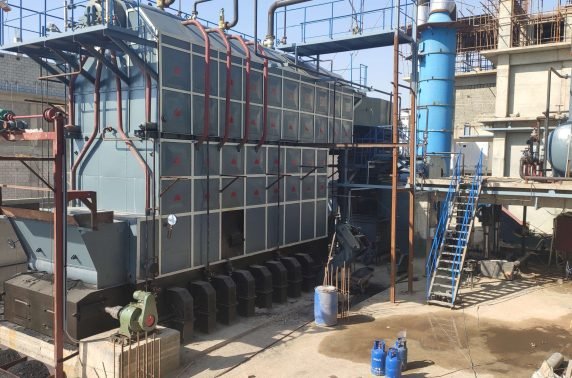
How Does Fuel Quality and Preparation Impact Biomass Boiler Efficiency?
One of the biggest challenges in biomass boiler operation is fuel variability. Unlike natural gas or oil, which are uniform in quality, biomass fuels vary widely in moisture content, particle size, ash composition, and calorific value. Poor fuel quality or inadequate preparation results in incomplete combustion, slagging, higher maintenance, and reduced efficiency. Ensuring consistent, high-quality biomass fuel and proper preparation is therefore critical to sustaining efficiency and protecting boiler performance.
Fuel quality and preparation impact biomass boiler efficiency by determining combustion stability, heat release, and ash behavior. Low-moisture, uniform-sized, and properly prepared fuels such as wood pellets enable efficiencies above 85–90%, while unprocessed high-moisture or heterogeneous fuels can lower efficiency by 10–20%, increase emissions, and shorten boiler lifespan.
In short, efficient biomass boilers depend as much on fuel quality management as on combustion technology.
High-moisture biomass improves boiler efficiency because it absorbs more heat.False
Moisture lowers net calorific value and wastes energy evaporating water, reducing boiler efficiency.
Consistent particle size in biomass fuel ensures stable combustion.True
Uniform size improves feeding, mixing with air, and complete combustion, leading to higher efficiency.
1. Fuel Moisture Content
Ideal: <20% moisture (wood pellets ~8–12%).
Wet fuels waste energy evaporating water → lower flame temperature → incomplete combustion.
Rule of thumb: Each 10% increase in moisture reduces efficiency by ~2–3%.
| Fuel Type | Moisture (%) | Net Calorific Value (MJ/kg) | Typical Boiler Efficiency (%) |
|---|---|---|---|
| Wood Pellets | 8–12 | 17–19 | 88–92 |
| Wood Chips | 25–35 | 10–12 | 78–84 |
| Agri Residues | 15–30 | 12–15 | 80–85 |
2. Particle Size and Preparation
Too large → incomplete combustion, unburned char.
Too fine → dust handling issues, risk of explosion.
Uniformity ensures stable feeding and air distribution.
Pre-processing: chipping, shredding, or pelletizing improves fuel handling and combustion consistency.
3. Ash Content and Composition
High ash fuels (rice husk, straw) → slagging, fouling, and erosion of boiler tubes.
Alkali metals (K, Na) lower ash melting point → clinker formation.
Solution: ash monitoring, additives (e.g., kaolin), or fluidized bed technology to handle high-ash fuels.
4. Case Example
A 10 MW biomass CHP plant shifted from unprocessed wood chips (30% moisture, uneven size) to pre-dried chips (15% moisture, screened size):
Efficiency gain: +7%
CO emissions reduced by 40%
Annual fuel savings: $180,000
Payback for drying system: 1.5 years
5. Best Practices for Fuel Preparation
Invest in drying systems to reduce moisture.
Screen and size fuel for uniform feeding.
Blend fuels to stabilize calorific value.
Apply on-site quality monitoring for moisture, calorific value, and ash.
Conclusion
Fuel quality and preparation are the foundation of biomass boiler efficiency. By controlling moisture, particle size, and ash content, operators can achieve higher efficiency, cleaner combustion, and lower maintenance costs.
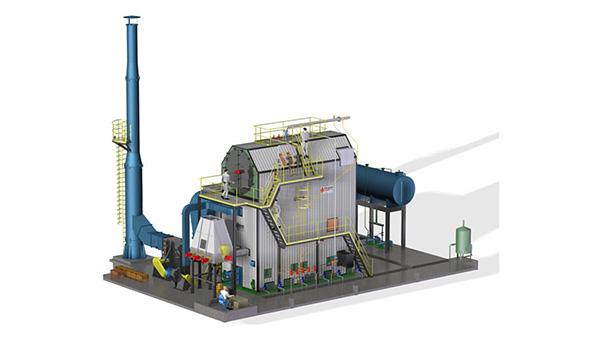
What Role Does Combustion Technology (Grate, Fluidized Bed) Play in Performance?
In biomass boilers, performance is not determined by fuel alone—combustion technology is equally critical. Since biomass varies in particle size, moisture, and ash content, the choice of combustion system (grate vs. fluidized bed) directly affects efficiency, fuel flexibility, emissions, and maintenance needs. Selecting the right technology ensures stable operation and maximum energy recovery.
Grate-fired systems are robust, cost-effective, and suitable for dry, uniform fuels like wood chips and pellets, while fluidized bed boilers provide higher efficiency, fuel flexibility, and lower emissions, making them ideal for high-moisture or mixed biomass fuels. The combustion technology determines how effectively fuel energy is converted into steam, with fluidized beds often achieving 85–90% efficiency compared to 75–85% for conventional grates.
This makes the combustion system one of the most important design decisions in any biomass boiler project.
Grate-fired boilers can efficiently handle all types of biomass fuels.False
Grates are best for uniform, low-ash fuels; high-moisture or ash-rich fuels cause slagging and efficiency losses.
Fluidized bed boilers achieve higher efficiency by enhancing mixing and combustion stability.True
The fluidized sand bed ensures uniform temperature, complete combustion, and fuel flexibility.
1. Grate Combustion Technology
Types: Fixed grate, moving grate, reciprocating grate.
Fuel Handling: Best for wood chips, pellets, briquettes with <25% moisture.
Advantages: Simple, proven, lower CAPEX, easy maintenance.
Limitations: Poor performance with high-moisture, fine particles, or ash-rich fuels.
| Parameter | Grate Boilers | Fluidized Bed Boilers |
|---|---|---|
| Efficiency (%) | 75–85 | 85–90 |
| Fuel Flexibility | Low (wood-based) | High (agricultural residues, waste, coal blends) |
| Moisture Tolerance | <25% | Up to 50% |
| Emission Control | Moderate | Superior (lower NOx, SO₂) |
| CAPEX | Lower | Higher |
2. Fluidized Bed Combustion (FBC) Technology
Principle: Fuel particles suspended in a turbulent bed of sand/ash fluidized by air.
Types: Bubbling FBC (BFBC), Circulating FBC (CFBC).
Advantages:
High efficiency (up to 90%).
Wide fuel flexibility (wood, straw, rice husk, refuse-derived fuel).
In-bed desulfurization with limestone → reduced SO₂.
Lower combustion temperature (850–900°C) → reduced NOx.
Limitations: Higher CAPEX, more complex O&M.
3. Case Example
A 20 MW biomass plant originally using a moving grate boiler faced clinker formation and low efficiency (78%) with rice husk fuel. After upgrading to a CFBC system:
Efficiency increased to 89%.
Fuel flexibility expanded to include agri residues and mixed biomass.
NOx emissions dropped by 30%.
Payback: 3.2 years despite higher CAPEX.
4. Selection Criteria
Fuel Type & Moisture: Grate for uniform fuels; FBC for variable fuels.
Efficiency Target: FBC for maximum energy recovery.
Emission Standards: FBC offers inherent compliance advantages.
Budget: Grate for lower upfront cost; FBC for lifecycle savings.
Conclusion
The choice between grate and fluidized bed combustion defines the efficiency, flexibility, and sustainability of biomass boiler operations. Grates are best for simple, uniform fuels, while FBC delivers superior performance for plants dealing with diverse or difficult biomass.
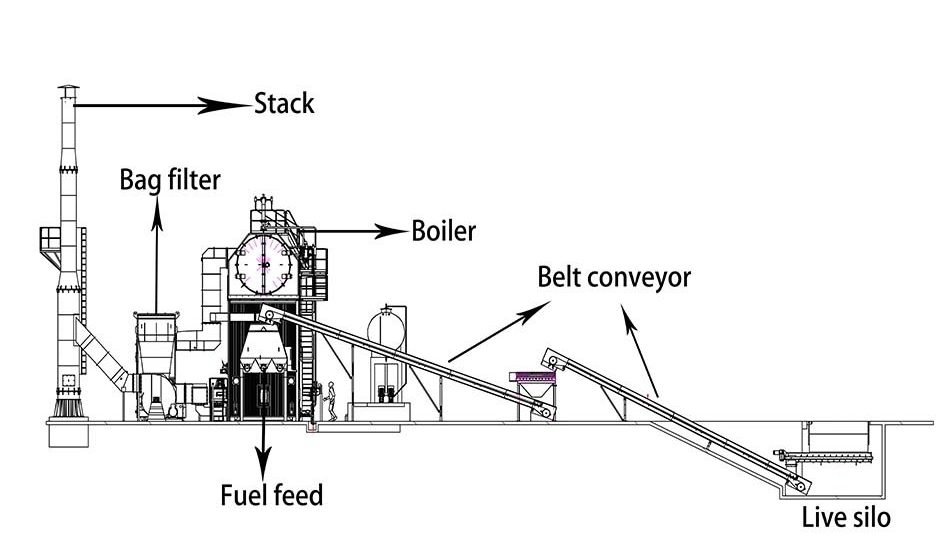
Why Is Excess Air Control Important for Stable Biomass Combustion?
Biomass fuels are inherently more variable than natural gas or oil—they differ in moisture, density, particle size, and ash composition. This variability makes precise air management essential to maintain complete combustion and high efficiency. Too little air results in incomplete combustion, carbon monoxide, unburned char, and smoke. Too much air, on the other hand, carries heat out through the stack, lowering boiler efficiency and destabilizing the flame. That’s why excess air control is one of the most critical factors in biomass boiler operation.
Excess air control is important for stable biomass combustion because it ensures complete burning of variable fuels while minimizing stack losses. Proper control maintains the optimal air-to-fuel ratio, stabilizes flame temperature, reduces CO and particulate emissions, and improves efficiency by 2–5%.
This makes air management not only an efficiency measure, but also a tool for reliable and environmentally compliant biomass boiler operation.
Adding more air always improves combustion quality in biomass boilers.False
Excess air beyond the optimal point reduces flame temperature, increases flue gas losses, and lowers efficiency.
Excess air control can save 2–5% in biomass boiler fuel costs.True
Optimizing the air-to-fuel ratio reduces incomplete combustion and stack losses, directly improving efficiency.
1. Combustion Challenges with Biomass
High moisture → needs more energy for evaporation.
Variable particle size → uneven mixing with air.
High volatile content → requires staged combustion air.
Ash behavior → can form clinkers if flame is too hot or uneven.
2. Effect of Excess Air on Performance
| Excess Air (%) | Combustion Quality | Flue Gas Temp (°C) | Efficiency (%) | CO Emissions (ppm) |
|---|---|---|---|---|
| 10 (Too Low) | Incomplete, smoky | 700 | 78 | 500+ |
| 30 (Optimal) | Stable, clean | 850 | 86 | <100 |
| 60 (Too High) | Weak flame, heat loss | 950 | 81 | <50 |
Observation: Efficiency peaks around 25–35% excess air, depending on fuel type and boiler design.
3. Methods for Excess Air Control
O₂ Sensors & Trim Systems: Adjust airflow in real time based on flue gas oxygen.
CO Monitoring: Indicates incomplete combustion.
Staged Air Supply: Primary air for fuel bed, secondary/tertiary air for volatiles.
Automated Dampers & Fans: Maintain consistent airflow under variable loads.
4. Case Example
A 15 TPH biomass grate-fired boiler burning wood chips operated at 55% excess air, causing efficiency losses. After installing O₂ trim control:
Excess air reduced to 32%.
Efficiency improved by +3.8%.
Annual savings: $95,000 in fuel.
CO emissions cut by 42%.
5. Secondary Benefits
Flame Stability: Prevents blow-off and thermal cycling.
Lower NOx & CO Emissions: Meets stricter environmental compliance.
Reduced Ash Problems: Proper flame temperature reduces clinker formation.
Conclusion
Excess air control is the cornerstone of stable and efficient biomass combustion. By balancing the air-to-fuel ratio, plants can achieve higher efficiency, cleaner emissions, and longer boiler life, even with variable fuel quality.
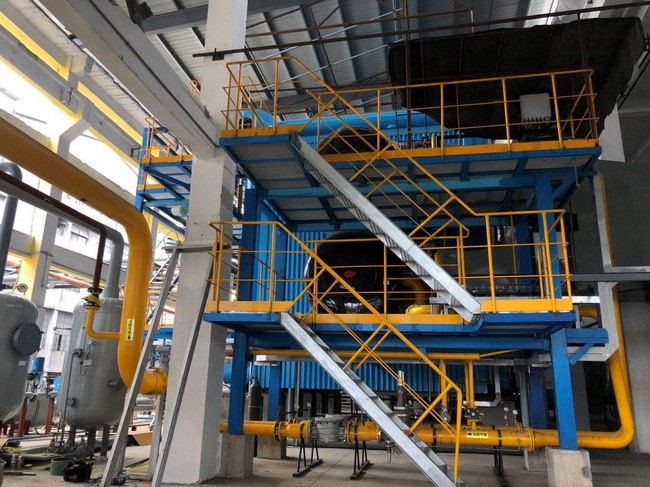
How Do Economizers and Air Preheaters Enhance Energy Recovery in Biomass Boilers?
One of the biggest sources of energy loss in biomass boilers is waste heat in flue gases. If this heat simply escapes through the chimney, efficiency remains low and fuel consumption rises. To recover this energy, two of the most effective solutions are economizers (heating feedwater) and air preheaters (heating combustion air). Together, they help biomass boilers reduce fuel demand, stabilize combustion, and improve overall thermal efficiency by up to 8–12%.
Economizers recover heat from flue gases to preheat boiler feedwater, while air preheaters use flue gas heat to warm combustion air. Both systems reduce fuel consumption, improve boiler efficiency, and stabilize combustion, with potential efficiency gains of 5–10% in biomass boilers.
This makes them essential add-ons for modern biomass-fired systems aiming for lower lifecycle costs and compliance with efficiency standards.
Economizers and air preheaters only provide minor benefits in biomass boilers.False
Depending on boiler size, they can improve efficiency by 5–10%, leading to significant fuel savings over time.
Air preheaters stabilize combustion by reducing fuel ignition delay.True
Warmer combustion air helps volatile biomass fuels burn more steadily and reduces unburned carbon losses.
1. The Role of Economizers
Working Principle: Flue gas passes over heat exchange tubes, transferring heat to incoming feedwater.
Impact: Raises feedwater temperature closer to saturation point, reducing boiler fuel demand.
Efficiency Gain: Typically 3–6%.
Best Applications: Medium to large biomass boilers (>10 TPH steam).
| Parameter | Without Economizer | With Economizer |
|---|---|---|
| Flue Gas Temp (°C) | 220 | 160 |
| Feedwater Temp (°C) | 60 | 110 |
| Boiler Efficiency (%) | 78 | 83 |
2. The Role of Air Preheaters
Working Principle: Flue gas heat warms incoming combustion air before it enters the furnace.
Impact: Improves fuel-air mixing, accelerates ignition, and stabilizes flame.
Efficiency Gain: Typically 2–4%.
Best Applications: Fuels with higher moisture (wood chips, agricultural residues).
| Parameter | Without Air Preheater | With Air Preheater |
|---|---|---|
| Combustion Air Temp (°C) | 30 | 120 |
| Ignition Time (s) | 5.5 | 3.0 |
| CO Emissions (ppm) | 220 | 130 |
3. Combined Benefits
When applied together:
Efficiency: Total gain of 5–10%.
Fuel Savings: 3–8% biomass reduction.
Emission Reduction: Lower CO, soot, and unburned carbon.
Operational Stability: Reduced clinker formation and better load-following.
4. Case Example
A 25 TPH fluidized bed biomass boiler burning rice husk installed both an economizer and regenerative air preheater:
Boiler efficiency rose from 80% to 87%.
Annual biomass savings: 4,500 tons.
Payback: 2.8 years due to reduced fuel costs.
5. Design Considerations
Fuel Moisture Content: High moisture → higher benefit from preheated combustion air.
Corrosion Risks: Economizers must be designed for low-temperature corrosion (sulfur/alkali deposits).
Space Requirements: Retrofits may require additional space in boiler house.
Conclusion
Economizers and air preheaters are proven energy recovery solutions that enhance biomass boiler performance. By recovering flue gas heat, they improve efficiency, cut fuel costs, stabilize combustion, and reduce emissions, making them indispensable for plants targeting both economic and environmental optimization.
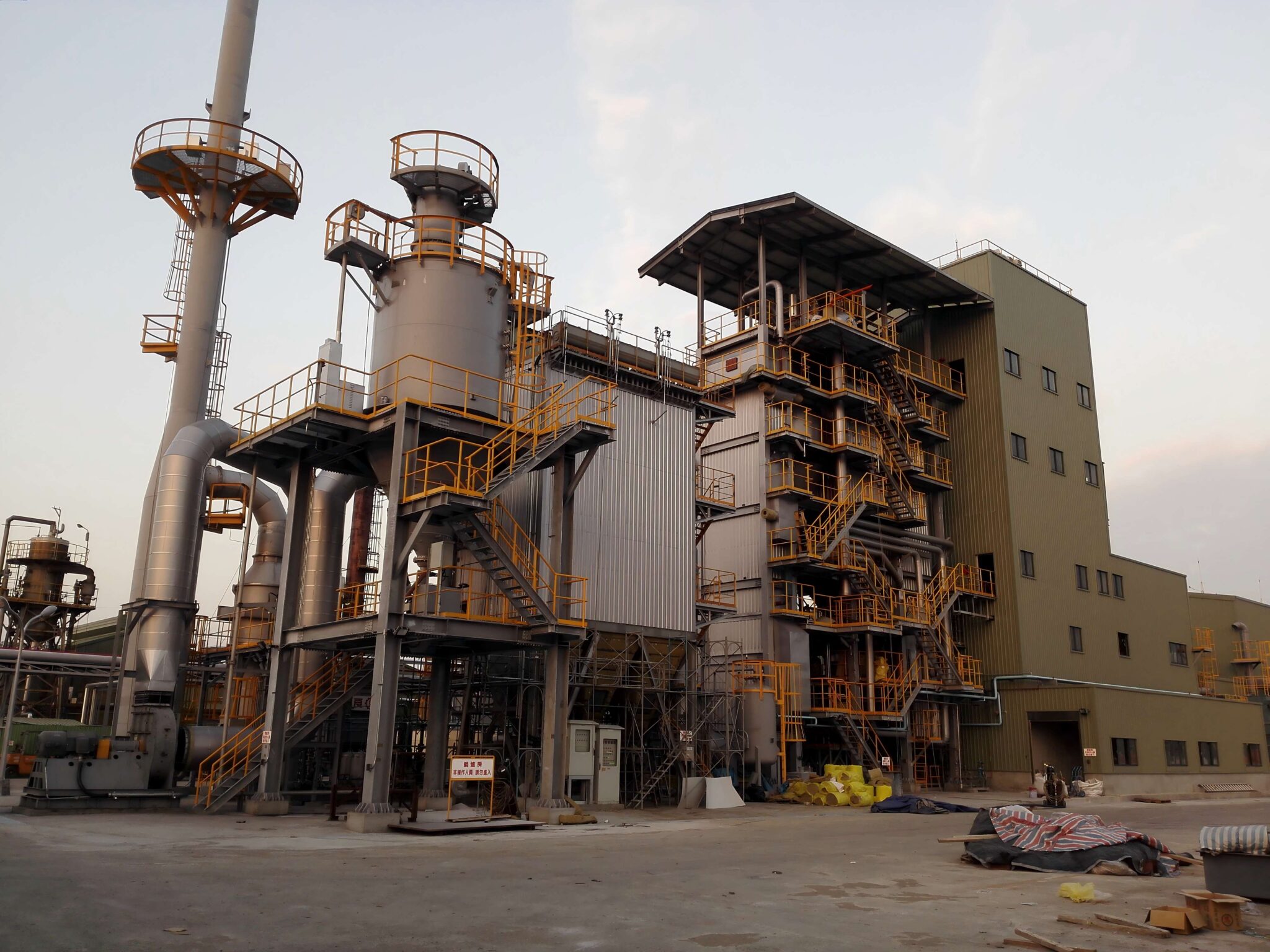
What Maintenance Practices Ensure Sustained High Efficiency in Biomass Boilers?
Even the most advanced biomass boiler loses efficiency over time if not properly maintained. Ash deposits, soot buildup, uncalibrated controls, and neglected fuel handling systems gradually raise fuel consumption, lower steam output, and increase emissions. For operators, this means higher costs and more downtime. The solution is a structured maintenance strategy designed specifically to sustain efficiency and reliability across the boiler’s lifecycle.
Sustained high efficiency in biomass boilers requires systematic maintenance practices including regular cleaning of heat transfer surfaces, ash and slag removal, fuel handling inspections, water treatment, burner and grate upkeep, sensor calibration, and proactive monitoring of efficiency indicators. Together, these measures ensure stable combustion, optimal heat transfer, reduced downtime, and extended equipment life.
This makes maintenance not a cost but an investment—preventing unplanned breakdowns while keeping energy performance at its peak.
Biomass boilers can operate at maximum efficiency without regular cleaning and maintenance.False
Ash and soot accumulation reduce heat transfer efficiency and increase fuel consumption if not routinely cleaned.
Proactive maintenance reduces long-term operating costs by lowering unplanned downtime and fuel waste.True
Regular inspections and servicing prevent efficiency losses and costly breakdowns.
1. Cleaning and Ash Management
Soot Blowing: Periodic cleaning of boiler tubes with compressed air or steam.
Ash Removal: Frequent emptying of ash hoppers and conveyors.
Slag Control: Prevent clinker buildup on grates by monitoring fuel quality and combustion conditions.
| Issue if Ignored | Impact on Efficiency | Maintenance Solution |
|---|---|---|
| Tube fouling | Heat transfer reduced 5–10% | Online/offline soot blowing |
| Clinker formation | Restricted airflow, unstable combustion | Manual or automated grate cleaning |
| Excessive ash carryover | High particulate emissions | Electrostatic precipitator/bag filter inspection |
2. Fuel Handling and Feeding System Maintenance
Inspect conveyors, screws, and feeders for blockages and wear.
Lubricate moving parts regularly.
Check for bridging in silos to ensure steady fuel flow.
Keep moisture monitoring systems calibrated.
3. Water-Side Maintenance
Water Treatment: Prevent scaling and corrosion.
Blowdown Management: Maintain TDS within limits.
Deaerator Checks: Avoid oxygen-induced corrosion.
4. Combustion and Burner System Maintenance
Grate inspection for warping or cracks.
Burner nozzles cleaned and aligned.
Secondary air dampers adjusted for proper mixing.
Fuel-air ratio recalibrated periodically.
5. Automation, Sensors, and Efficiency Monitoring
Oxygen sensors and flue gas analyzers calibrated quarterly.
CO and NOx monitors checked for accuracy.
Automation system software updated.
Continuous efficiency tracking using digital monitoring.
6. Case Example
A 10 MW biomass grate-fired boiler suffered efficiency decline from 85% to 78% over 18 months due to neglected cleaning. After implementing a structured maintenance program:
Efficiency restored to 86%.
Fuel savings: 1,800 tons/year.
Downtime reduced by 25%.
Maintenance cost payback: 14 months.
7. Best Practice Maintenance Schedule
| Frequency | Tasks |
|---|---|
| Daily | Ash removal, fuel feeder check, pressure/temperature monitoring |
| Weekly | Soot blowing, grate inspection, lubrication of conveyors |
| Monthly | Burner inspection, flue gas analyzer check, blowdown system review |
| Quarterly | Sensor calibration, refractory inspection, air damper adjustments |
| Yearly | Full system overhaul, tube bundle inspection, automation system upgrade |
Conclusion
Sustained biomass boiler efficiency is not achieved by design alone—it is maintained through disciplined cleaning, monitoring, and servicing. By adopting a structured maintenance schedule, operators not only maximize efficiency but also minimize fuel costs, reduce emissions, and extend equipment lifespan.
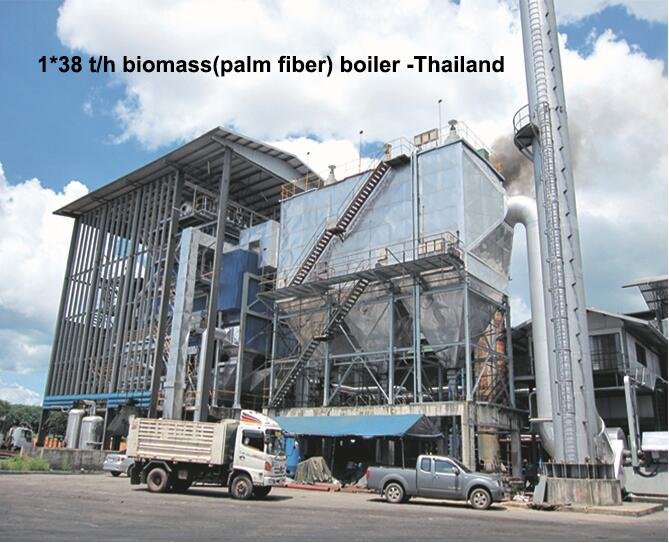
How Do Automation and Digital Monitoring Improve Biomass Boiler Operation?
Unlike fossil fuels, biomass is variable in moisture, density, and calorific value, which makes boiler operation more complex and less predictable. Manual control often leads to unstable combustion, efficiency losses, higher emissions, and unplanned downtime. This is where automation and digital monitoring transform performance—by ensuring the boiler continuously adapts to changing conditions for optimal output.
Automation and digital monitoring improve biomass boiler operation by stabilizing combustion, optimizing fuel-air ratio, reducing excess air, enabling predictive maintenance, ensuring regulatory compliance, and providing real-time performance insights. Together, they improve efficiency by 3–7%, reduce emissions, and extend equipment life.
This makes them not just add-ons but core technologies for achieving reliable, efficient, and sustainable biomass boiler performance.
Manual operation of biomass boilers ensures the same stability and efficiency as automated control.False
Biomass fuel variability requires continuous adjustments that can only be managed effectively with automation and real-time monitoring.
Digital monitoring allows predictive maintenance by analyzing trends in boiler performance data.True
Sensors and data analytics detect early signs of fouling, wear, or imbalance, preventing costly breakdowns.
1. Automation for Stable Combustion
Fuel Feeding Control: Automated conveyors and screw feeders ensure consistent biomass delivery.
Air-to-Fuel Ratio Management: Sensors regulate primary, secondary, and tertiary air supply in real time.
Load Matching: Boiler output adjusted automatically to match steam demand without manual intervention.
| Parameter | Manual Control | Automated Control |
|---|---|---|
| Excess Air (%) | 45–60 | 28–35 |
| Boiler Efficiency (%) | 78–82 | 85–88 |
| CO Emissions (ppm) | 200+ | <100 |
2. Digital Monitoring for Efficiency and Compliance
Real-Time Data: Flue gas O₂, CO, and NOx tracked continuously.
Performance Dashboards: Operators view live efficiency, load, and fuel consumption trends.
Regulatory Reporting: Automatic logs simplify compliance with environmental authorities.
Alarm Systems: Detect deviations before they escalate into breakdowns.
3. Predictive Maintenance Benefits
Sensor Alerts: Detect fouling in heat exchangers.
Trend Analysis: Monitors pump vibration, fan energy use, and pressure drop.
Downtime Reduction: Shifts maintenance from reactive to predictive, reducing costs.
4. Case Example
A 15 MW fluidized bed biomass plant integrated an advanced automation and monitoring system:
Efficiency improved from 82% to 88%.
Excess air reduced by 15%, lowering fuel use by 6%.
Maintenance costs dropped 20% with predictive servicing.
Regulatory compliance reporting time reduced by 70%.
5. Future Integration
AI-based Controls: Machine learning to predict best operating parameters.
IoT Integration: Cloud-based dashboards for remote monitoring.
Digital Twins: Simulated boiler operation for training and optimization.
Conclusion
Automation and digital monitoring are the cornerstones of modern biomass boiler operation, ensuring stable combustion, reduced fuel waste, lower emissions, and smarter maintenance. Plants that adopt these technologies secure long-term savings and environmental compliance.
🔍 Conclusion
Improving the efficiency of industrial biomass boilers requires a balanced approach of fuel management, combustion optimization, and preventive maintenance. With the right technologies and practices, plants can enjoy lower operating costs, higher reliability, and improved environmental performance.
📞 Contact Us
💡 Looking to optimize your biomass boiler performance? We provide fuel testing, combustion system upgrades, and turnkey efficiency improvement solutions tailored to your needs.
🔹 Contact us today to improve your biomass boiler efficiency and reduce operating costs. 🌱🔥📊✅
FAQ
How can the efficiency of an industrial biomass boiler be improved?
Efficiency can be improved through a combination of design upgrades, operational practices, and fuel management:
Fuel preparation – Use properly dried biomass (≤20% moisture) for better combustion.
Combustion control – Optimize air-fuel ratio with staged combustion and oxygen monitoring.
Heat recovery systems – Install economizers, air preheaters, and flue gas recirculation.
Insulation and sealing – Minimize heat loss from boiler surfaces and ducts.
Ash management – Regular removal prevents slagging and fouling that reduce efficiency.
Why does fuel quality matter for biomass boiler efficiency?
Fuel is the single biggest efficiency factor:
High moisture content wastes energy on drying rather than steam generation.
Particle size impacts combustion—too fine causes blow-off, too coarse causes incomplete burning.
Consistent supply ensures stable flame and reduces fluctuations in steam output.
What role does combustion technology play in biomass boiler efficiency?
Different grate and bed technologies affect efficiency:
Reciprocating grates – Suitable for mixed fuels but less efficient.
Circulating Fluidized Bed (CFB) – Provides higher combustion efficiency and better fuel flexibility.
Fixed grates – Simpler but prone to incomplete combustion with variable fuels.
Advanced combustion control systems with oxygen trim and CO monitoring further optimize performance.
What maintenance practices support high efficiency in biomass boilers?
Preventive maintenance reduces unplanned downtime and heat losses:
Daily checks – Monitor pressure, water levels, and combustion stability.
Routine cleaning – Remove soot, clinker, and ash from tubes and grates.
Water treatment – Prevent scaling and corrosion that lower heat transfer.
Inspection of refractory and seals – Prevent air leakage and loss of combustion efficiency.
Can automation and digital controls improve biomass boiler performance?
Yes. Modern biomass boilers use:
O₂/CO sensors for precise combustion tuning.
PLC-based controls to adjust fuel feed and air supply.
Real-time monitoring for efficiency tracking and predictive maintenance.
Automation can increase efficiency by 5–10% and extend equipment lifespan.
References
U.S. Department of Energy – Biomass Boiler Efficiency – https://www.energy.gov
IEA Bioenergy – Biomass Combustion Technologies – https://www.ieabioenergy.com
Spirax Sarco – Biomass Boiler Efficiency Guide – https://www.spiraxsarco.com
Forbes Marshall – Biomass Boiler Optimization – https://www.forbesmarshall.com
Babcock & Wilcox – Biomass Energy Systems – https://www.babcock.com
Thermax – Industrial Biomass Boiler Efficiency – https://www.thermaxglobal.com
ScienceDirect – Efficiency Analysis of Biomass Boilers – https://www.sciencedirect.com
ResearchGate – Biomass Combustion Efficiency Studies – https://www.researchgate.net
MDPI – Advances in Biomass Boiler Technology – https://www.mdpi.com
Engineering Toolbox – Biomass Fuel and Boiler Efficiency – https://www.engineeringtoolbox.com

